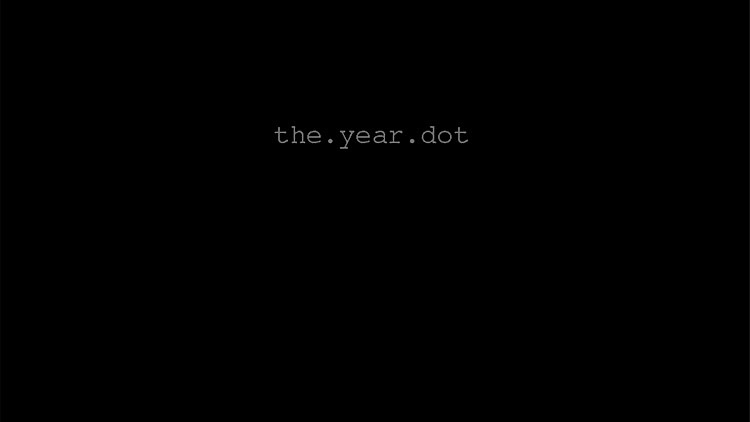The online project the.year.dot was a response to the annus mirabilis of the year 2000, and an accompanying cultural/technological zeitgeist that somehow managed to combine dot.com rapture with millennial anxiety. As a legion of programmers toiled to make millions of computers Y2K compliant, the.year.dot pondered the ramifications of a deeper Biblical code. At the heart of the project was a specially designed web crawler that searched for each of the 1300 words in the Book of Revelations. Each of these word-by-word searches involved a numerological procedure, locating the sixth site, and then the sixth word and the sixth image in it, before pursuing the sixth link. The internet, in its millennial alignment, became a kind of ‘revelation machine’, to be deciphered according to a playful form of exegesis. Although the comet-trail patterns they traced across the net were documented in a hyperlinked version of the Revelations text, the searches also brought back an array of visual and textual material, which was handed to six (of course!) artists as either subject or stimulus for new art works. The six artists’ pieces incorporated the material and developed the concept in original and distinctive ways, punning on the human capacity to read or misread ‘signs’ (Jake Tilson) or to see patterns emerging from otherwise random formations (Clive Gillman’s allusions to ‘event horizons’; Rory Hamilton’s use of Rorschach shapes). Elsewhere, Jeremy Millar and Thomson & Craighead played formal games with the elusive nature of meaning and signification, while Carey Young brought a conceptual twist to the underlying themes of fortune and predestination. In her piece, ‘Art and Life’, she invested her artist’s fee in shares in two ‘new technology’ companies, and charted their (rising) fortunes over the course of the year.
the.year.dot
Group Project
Website, 1999
Carey Young, Clive Gillman, Jake Tilson, Thomson & Craighead, Rory Hamilton, Jeremy Millar
Project Overview
the.year.dot was a Film and Video Umbrella online project. Funded by the Arts Council of England, with additional support from East England Arts.
The archived version of the the.year.dot website has been rebuilt in order to contextualise the project and make the site self-contained. At the time of production, there were links to external sites and reliance on third party software which may no longer exist.
